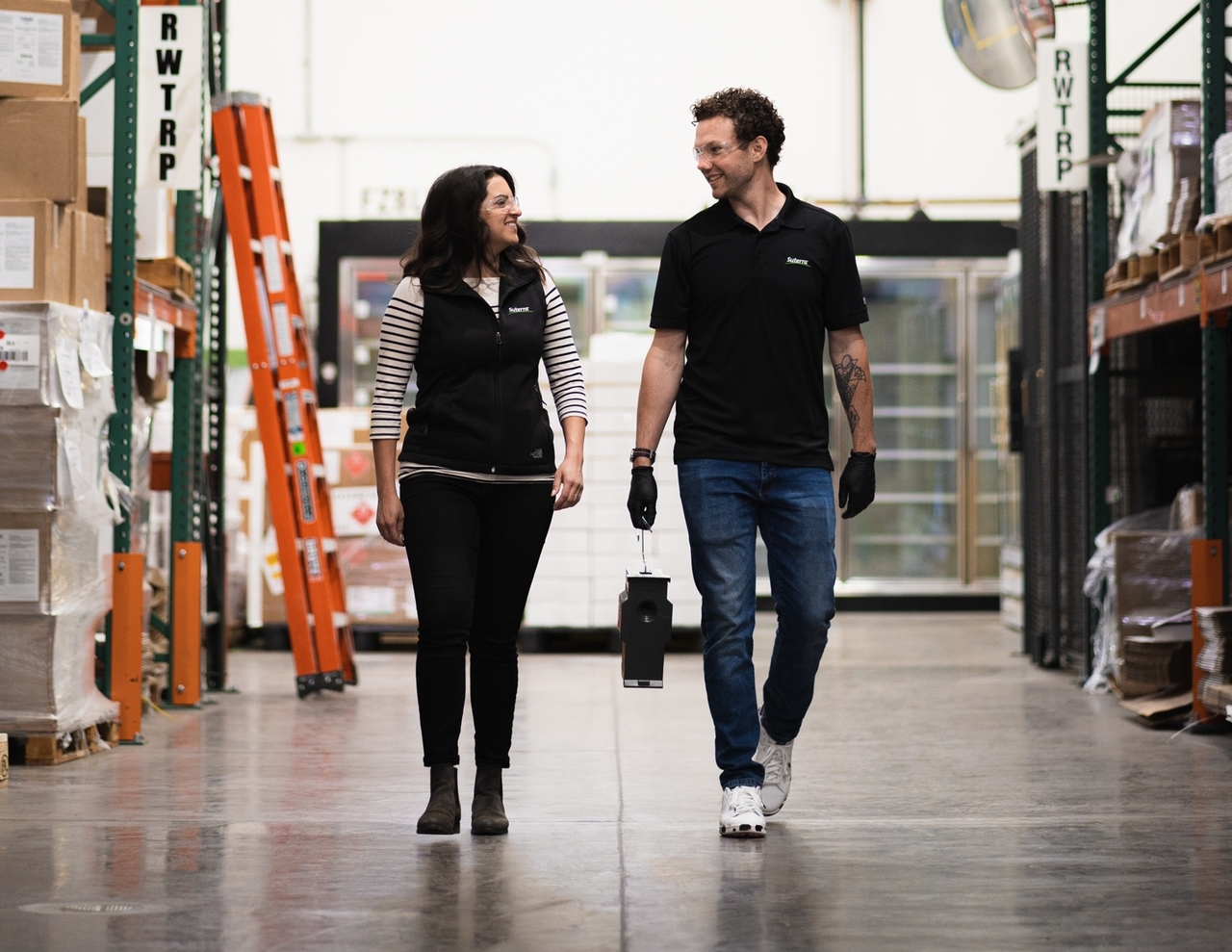


Worried that your stored product facility may be vulnerable to an Indian meal moth infestation? Learn more about monitoring for this pest of stored grains, nuts, pet food, and other stored product in this short article.
Tracking Indian meal moth populations in your stored product facility is best accomplished with sticky traps and pheromone-based lures. Pheromone lures work by imitating the chemical signal produced by sexually mature females, thus luring moths to a sticky trap where they can be later counted by a PMP. Suterra’s traps come with a grid built into the sticky traps, making it especially easy to take sample counts in high pest pressure.
Suterra’s IMM/SPM BioLure® is easy to use and quick to set up. Pest Management Professionals (PMPs) simply need to peel off the clear protective cover and apply the lure to the inside of the trap using the adhesive backing. We recommend that PMPs use the IMM/SPM BioLure® in conjunction with our small paper delta (SPD) trap. Unused packages of IMM/SPM BioLure® can be refrigerated or stored in a cool, dry location as a best practice.
The pheromone produced by Indian meal moth may attract and can be used for some closely related stored product moths that may be present in your facility. These moths include the Mediterranean flour moth, raisin moth, almond moth, and tobacco moth. However, if monitoring a different stored product moth not on this list, please confer with your Suterra representative or contact us online for monitoring information before purchasing the IMM/SPM BioLure®. Pheromone products for pest monitoring and management are generally species-specific, and the taxonomic similarity between the aforementioned species makes them a rather exceptional case.
In addition to using pheromone monitoring products, PMPs can assess the presence of Indian meal moth visually by taking monthly samples. The Indian meal moth only feeds in its larval stage. They are surface feeders, so the primary form of damage caused by the moth is not by what they eat, but by the waste materials they leave behind. Indian meal moth may leave behind frass, egg shells, pupal cases, silk and cast skins in food products, which can serve as a vector for fungal infestations in your product.
If Indian meal moths are present in high enough quantities, you may be able to identify the species by finding the larvae or pupae themselves. Indian meal moth larvae vary in color depending on what they are eating but are usually off-white and grow to about a ½ inch before pupation. The moths pupate away from their food source and produce a brown cocoon, usually about ¼ inch long. In general, the moth will spin a silk case around its cocoon, similar to the silk it produces in its larval stage.
Once the presence of Indian meal moth is determined, pest control operators should take immediate steps to prevent a full-fledged infestation. Preventative actions are the best way to avoid IMM populations spiraling out of control. Rigorous sanitation in the facility is a simple but effective way to prevent high pest pressure.
In cases where Indian meal moth pressure is already high, PMPs may find they need to employ severe treatment options such as fogs and fumigations, as this pest does not respond well to chemical control. Other potential options for treatment can be localized. Heat (>130 degrees Fahrenheit) or cold treatment can eliminate an infestation. In larger facilities, mating disruption can be used to keep IMM populations under control. Suterra’s CheckMate® Puffer® IMM works by actively dispersing the female sex pheromone in the ambient warehouse environment, preventing males from finding mates and reducing populations in future generations.
If you need assistance with a stored product infestation, the Suterra team is happy to help. Visit our CX page to meet our U.S. Commercial Pest experts and learn more about how pheromone products can help you take control of your facility once more.